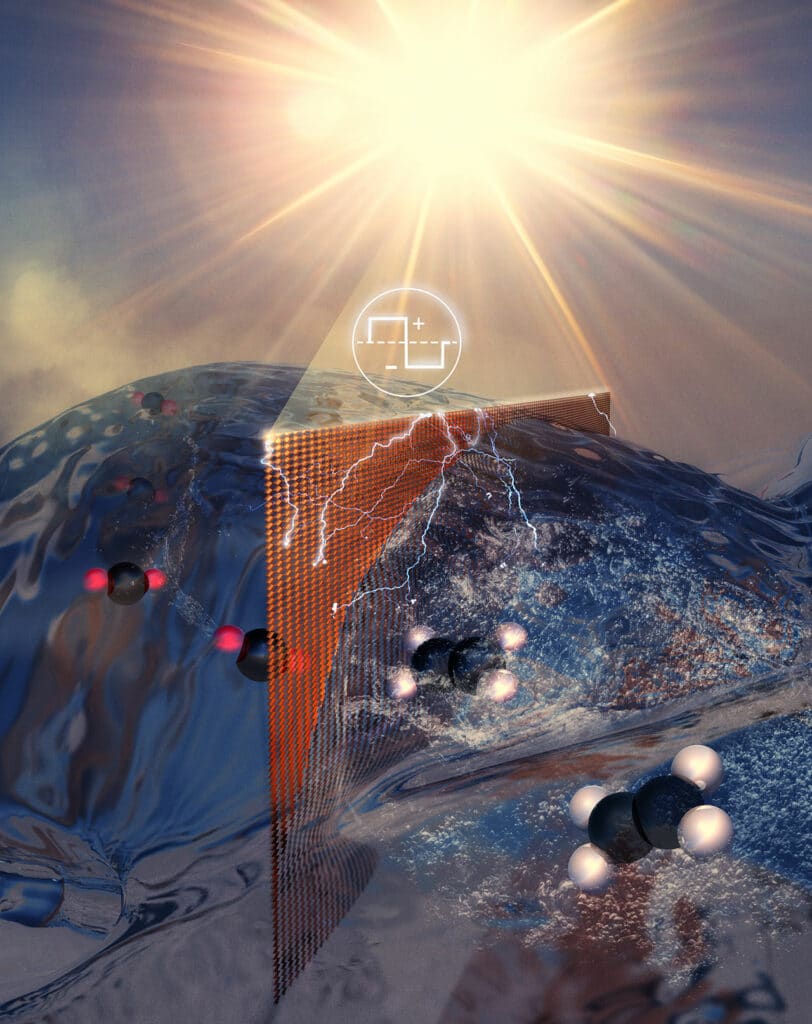The increasing global energy demand has led to faster consumption of fossil fuels, which has increased anthropogenic CO2 emissions, causing critical environmental issues. Even though continuous progress in increasing the utilization of renewable energy sources like solar, wind, and hydroelectricity to reduce fossil fuel consumption has been made, these resources still meet only a fraction of the current energy demands. Hence, there is an urgent need to develop sustainable alternatives to mitigate the anthropogenic CO2 concentration in the atmosphere.
Now, engineers at the University of Illinois Chicago (UIC) have discovered a way to convert 100% of carbon dioxide captured from the industrial exhaust into ethylene, a key building block for plastic products.
For years, scientists have been exploring the possibility of converting captured carbon dioxide into useful material such as ethylene, one of the major precursors of plastic. But UIC researchers claim their approach is the first to achieve nearly 100% utilization of carbon dioxide to produce hydrocarbons.
UIC team’s system uses electrolysis to transform captured carbon dioxide gas into high purity ethylene, with other carbon-based fuels and oxygen as byproducts. Researchers develop an aqueous flow-through electrochemical cell that can make the conversion more efficient. An electric current is passed through the cell, half of which is filled with captured carbon dioxide while the other half contains a water-based solution.

An electrified catalyst draws charged hydrogen atoms from the water molecules into the other half of the unit separated by a membrane, where they combine with charged carbon atoms in the CO2, forming C2H4 – ethylene. The process can convert up to 6 metric tons of carbon dioxide into 1 metric ton of ethylene, recycling almost all carbon dioxide captured.
Normally, ethylene is made in a process called steam cracking that requires enormous amounts of heat. Cracking generates about 1.5 metric tons of carbon emissions per ton of ethylene created. But the team says that the use of renewable energy sources to run the new system can make the process carbon negative.
According to the lead researcher Meenesh Singh, his team’s approach surpasses the net-zero carbon goal of other carbon capture and conversion technologies by actually reducing the total carbon dioxide output from the industry. “It’s a net negative,” he said. “For every 1 ton of ethylene produced, you’re taking 6 tons of CO2 from point sources that otherwise would be released to the atmosphere.”
In addition, UIC scientists were able to produce other carbon-rich products useful to the industry with their electrolysis approach. They also achieved a very high solar energy conversion efficiency, converting 10% of energy from the solar panels directly to carbon product output. This is well above the state-of-the-art standard of 2%. For all the ethylene they produced, the solar energy conversion efficiency was around 4%, approximately the same rate as photosynthesis.
Ethylene is used not only to create plastic products for the packaging, agricultural, and automotive industries but also to produce chemicals used in antifreeze, medical sterilizers, and vinyl siding for houses.
Journal reference:
- Aditya Prajapati, Nishithan C. Kani, Joseph A. Gauthier, Rohan Sartape, Jiahan Xie, Ivan Bessa, Miguel T. Galante, Samuel L. Leung, Marcio H.S. Andrade, Robert T. Somich, Márcio V. Rebouças, Gus T. Hutras, Nathália Diniz, Meenesh R. Singh. CO2-free high-purity ethylene from electroreduction of CO2 with 4% solar-to-ethylene and 10% solar-to-carbon efficiencies. Cell Reports Physical Science, 2022; DOI: 10.1016/j.xcrp.2022.101053
New electrochemical system converts captured CO2 into ethylene
Source: Tambay News

0 Comments